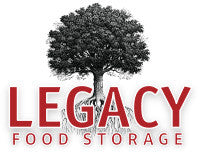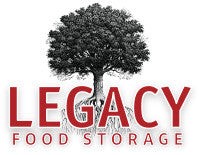
Before a Winter Storm Hits
Well. That came out of nowhere. The leaves haven't even all changed colors yet, and they're predicting a winter storm. Normally, you start thinking about winter tasks a couple weeks from now, but this is catching you a little off guard.
The more severe the prediction, the greater the chance that people will flock to stores for supplies. Most will wait until the last minute, so it’s best to stay ahead of the curve. Here are some important steps to address sooner rather than later.
Get the Forecast Details
Don't just read "winter storm warning." Get the actual details so you know what to expect:
- When will it start and how long will it last?
- Snow, ice, or both?
- How much accumulation?
- Will there be high winds?
- What are the temperature predictions?
- Any unusual language in the forecast?
Pay attention to severity signals. Words like "historic," "unprecedented," "life-threatening temps," or "power outages expected" mean this isn't a typical storm. A storm followed by a deep freeze means your pipes are at risk. A storm followed by a quick thaw means less worry about freezing but more about flooding.
If this is predicted to be more severe than usual, you need to step up your preparations beyond what you'd normally do.
Take Inventory
Look at what you already have before you make a shopping list. You probably have more than you think:
- Flashlights and batteries
- Candles, matches, or other lighting options
- No cook/ready to eat shelf-stable foods or backup cooking solutions.
- Bottled water or containers you can fill
- Pet food and supplies
- Alternative heating supplies (wood, kerosene, propane)
- Extra blankets and sleeping bags
- Winter gear for everyone (boots, gloves, hats, coats)
Check if the kids have outgrown their winter gear. A storm isn't the time to discover their boots don't fit anymore.
If you have alternative heating (wood stove, kerosene heater, propane), check your fuel supply now. If you heat with oil or propane and your tank is low, call for a delivery today. The more time you can give them, the better chance you have of getting it before the storm.
Winter power outages have specialized needs. You're not just staying comfortable, you're staying warm. Make a list of what you're missing and what you need.
Get Your Supplies
Now that you know what you need, go get it. Don't wait. The stores will get picked over as the storm gets closer, don’t wait until the last minute.
Focus on:
- Fresh foods you'll eat in the next few days, plus shelf-stable meal options
- Fresh batteries if you're low
- Medications or baby supplies you can't do without
- Pet supplies if you're running low
- Propane or fuel if you use it for heat or cooking
- Ice melt for sidewalks and walkways
- Extra bottled water for drinking and cooking
- Heavy-duty bags for toilet if your pipes freeze
- Any winter gear you discovered you need
While you're out, fill your gas tank. If you need to go anywhere during or after the storm, you won't be stuck with an empty tank in freezing temperatures.
Handle Outside Tasks
Take care of anything requiring you to be outside or use your car while conditions are still good.
Decide where to park your car during the storm, try to avoid under trees with heavy branches. Avoid blocking the driveway where a plow might trap it.. If you park on the street, avoid spots where plows push snow.
Bring in or secure anything that could blow around or get buried. Patio furniture, kids' toys, garbage cans, garden tools. This prevents a trash can or a lawn chair from blowing into your window at 2 AM.
Check your gutters and downspouts for clogs. Ice dams happen when water can't drain properly and can cause roof damage, interior damage, and structural problems.
If you have a generator, test it now. Make sure it actually runs and you have fuel. Don't wait to see if you need it.
If you have time, trim any tree branches hanging over your house or power lines if you can do it safely. At minimum, know which ones worry you so you can watch them during the storm.
Indoor Prep Before the Storm Hits
Once you've got supplies and handled outside tasks, get your house ready. Delegate if you can for efficiency.
Charge everything with a battery. Phones, tablets, laptops, power banks, flashlights, anything. Plug it all in now while you can.
Do your laundry and wash the dishes. Clean clothes and clean dishes mean you start any outage with a full supply.
Locate your flashlights and put them where you can grab them in the dark. Not in a drawer. Out and visible.
Know where your circuit breaker is and which switches control what. You might need this information in the dark.
Fill your bathtub or some buckets with water for flushing toilets. In winter storms, pipes can freeze, which means no running water even if you have city water.
Fill a few pitchers or pots with drinking water and put them in the fridge. You don't need 50 gallons, just enough for a day or two.
If you have a detached garage, bring winter gear or any supplies into the house now so you don't have to go out later to get them.
Check on your neighbors, especially elderly ones. Do they need anything? Do they have your number? Do you have theirs?
Make sure everyone in your house knows the plan. Where are the flashlights? What do we do if the power goes out? Where do we meet if something goes wrong?
During the Storm
Stay inside unless it's an emergency or you need to prevent damage, like moving a vehicle you forgot about or clearing dangerously heavy snow from your roof.
Unplug sensitive electronics like computers and TVs if you don’t have a surge protector on them. Power can surge when electricity comes back and can damage them.
If your heat goes out, close off rooms you're not using. Have everyone stay in one or two rooms and hang blankets over doorways to keep heat in.
When temperatures drop below freezing, set your faucets to a slow drip. This can help prevent pipes from freezing and relieve pressure in the system. Moving water is harder to freeze than standing water.
Never use a gas stove, grill, or generator inside for heat. Carbon monoxide kills people this way every winter. You can cook with a propane or butane stove inside if you have enough ventilation, because you're using it only temporarily. If you're cold, it is safest to add layers and use blankets.
Keep your phone on low power mode. Save your battery for actual emergencies or important updates, not social media. Play cards instead.
In a winter storm, if the power goes out, you can move food outside or to an unheated garage to keep it cold. Your main concern isn't food spoiling, it's staying warm.
What This Approach Does
This isn't about having every possible supply or fancy gear. It's about using the time you have wisely.
The people who struggle most are the ones who waited until the last minute, couldn't get what they needed, didn't think through a plan, and are stuck eating cold soup, crackers, and marshmallows.
You're not preparing for the worst-case scenario. You're preparing for the most likely one: losing power for a day or two, being stuck at home, dealing with cold and inconvenience.
Most winter storms are temporary problems, not disasters. The goal is to be comfortable and safe while you wait them out.
When you prepare ahead of the crowd, you're not stressed during the storm. You're just comfortably and confidently, waiting for it to pass.
Tags
- All
- 25 year food
- 25 year shelf life food
- 72 hour kit
- Best food storage types
- Best long-term food storage
- Blizzard preparedness
- Budgeting
- canning
- Certified GMO-free Emergency foods
- Certified GMO-free foods
- Coffee
- Comparison of emergency food methods
- Composting tips
- Dangers of genetically modified foods
- dehydrated food
- Edible Wild Plants
- emergcy preparedness
- Emergency Cooking
- Emergency Food
- Emergency food Christmas gifts
- emergency food storage
- Emergency Food Supply
- Emergency food supply recommendations
- Emergency Planning
- Emergency Preparedness
- Emergency preparedness advice
- emergency preparednesss
- Emergency Supplies
- Emergency supplies checklist
- Emergency Survival
- emergency survival gear
- Emergency survival kit checklist
- Emergency Survival skills
- exercise
- Family emergency preparedness
- Family emergency preparedness plan
- Family Preparedness
- Food Storage
- Food storage 25 year shelf life
- Food storage amounts
- Food storage Christmas
- Food storage containers long term
- Food Storage Secrets
- Food storage serving size
- Food storage types compared
- freeze dried food
- Freeze dried food storage
- freeze dried meats
- Freeze-dried emergency food storage
- Fruit Trees
- Gardening
- Getting Started
- Gluten-free food Storage
- Gourmet emergency food
- Healthy food storage
- How much emergency food to store
- Improved emergency preparedness
- Jared Markin
- Jared Matkin
- Legacy Premium
- Lessons learned from Hurricane Sandy
- Lessons learned from natural disasters
- long-term food storage
- Long-term Food Storage Guidelines
- Long-term Food Storage tips
- Long-term water storage
- Mental Emergency Preparedness
- Mental toughness
- Money-saving tips
- Natural disaster planning
- Natural Disasters
- Perfect Christmas gifts
- Pet Emergency preparedness checklist
- Pet Emergency preparedness kit
- Pet Emergency Survival tips
- Pets and Emergency Preparedness
- Plant Foraging
- portable solar panels
- portable solar power
- portable water filters
- protein drinks
- Risk of genetic modification
- Seed saving and storage
- Seed saving guide
- Self-reliance
- Self-reliant practices
- Shelf Life
- Solar Cooking
- Solar Ovens
- Special Dietary needs
- Stranded in a car in a blizzard
- Survival food
- Survival Gear
- survival kit
- Survival kits
- Survival Ovens
- Survival Skills
- survivalist gear
- suvival kit
- Tree Pruning tips
- Tree Trimming basics
- unique ideas
- water bottle with filter
- water filter
- water filter straw
- water filters
- Water Filtration
- water pitcher with filter
- water pitchers with filters
- Water purification
- Wild Food Foraging
- Winter composting
- Winter driving
- Winter preparedness tips
- Winter storm preparedness tips
- Winter Survival







